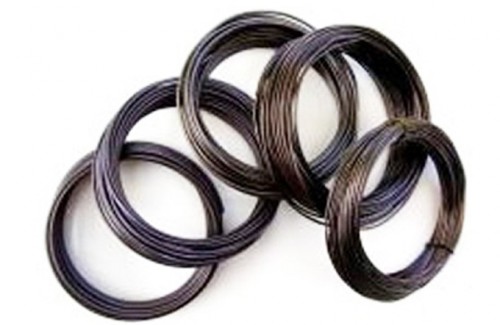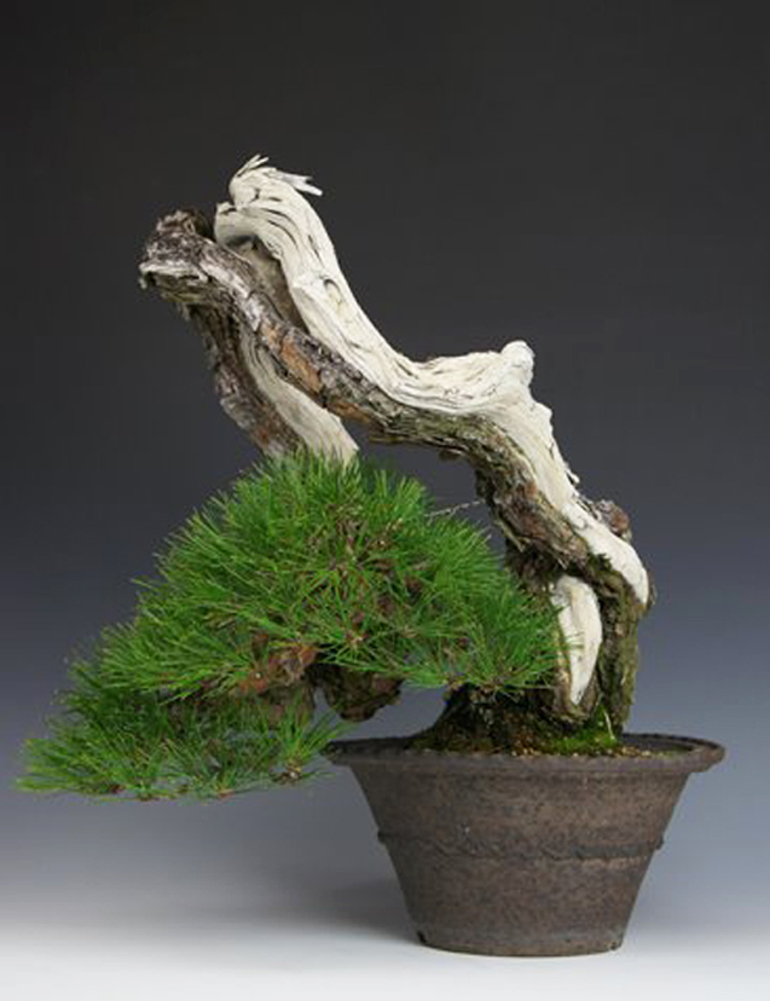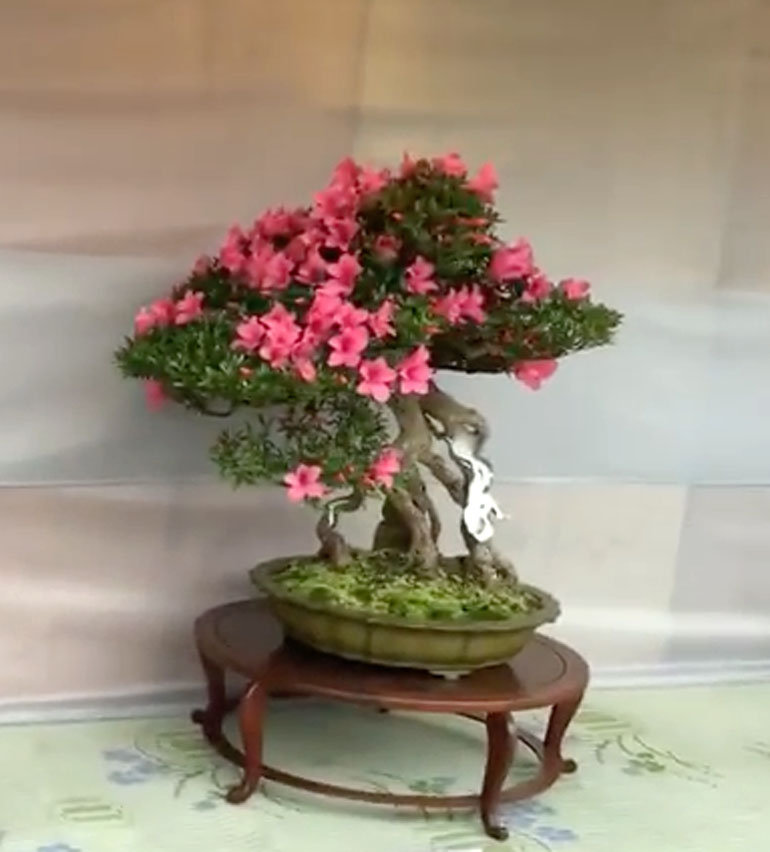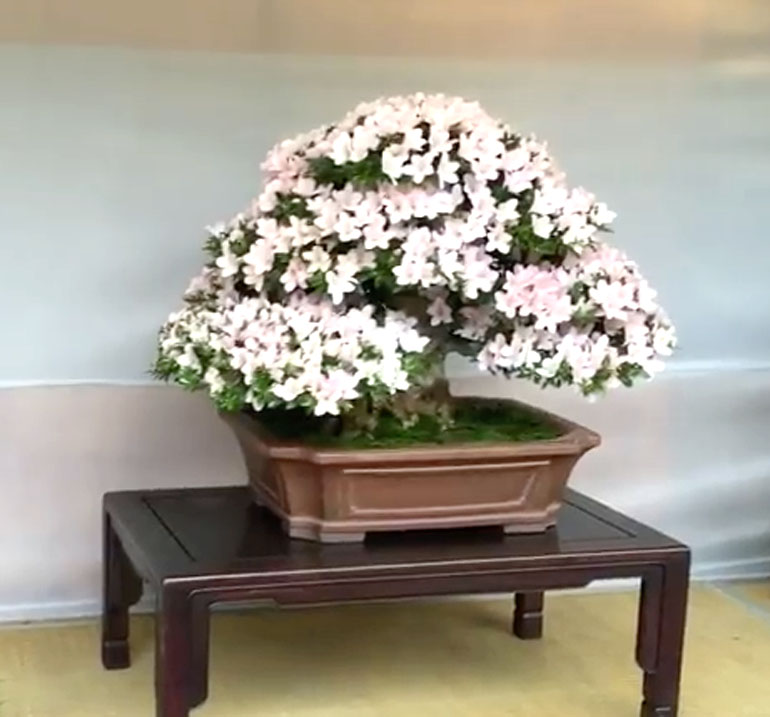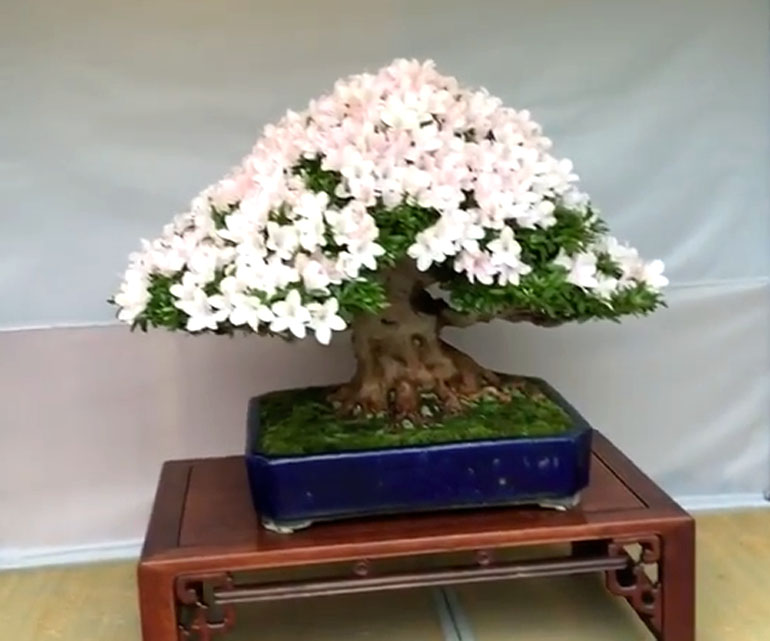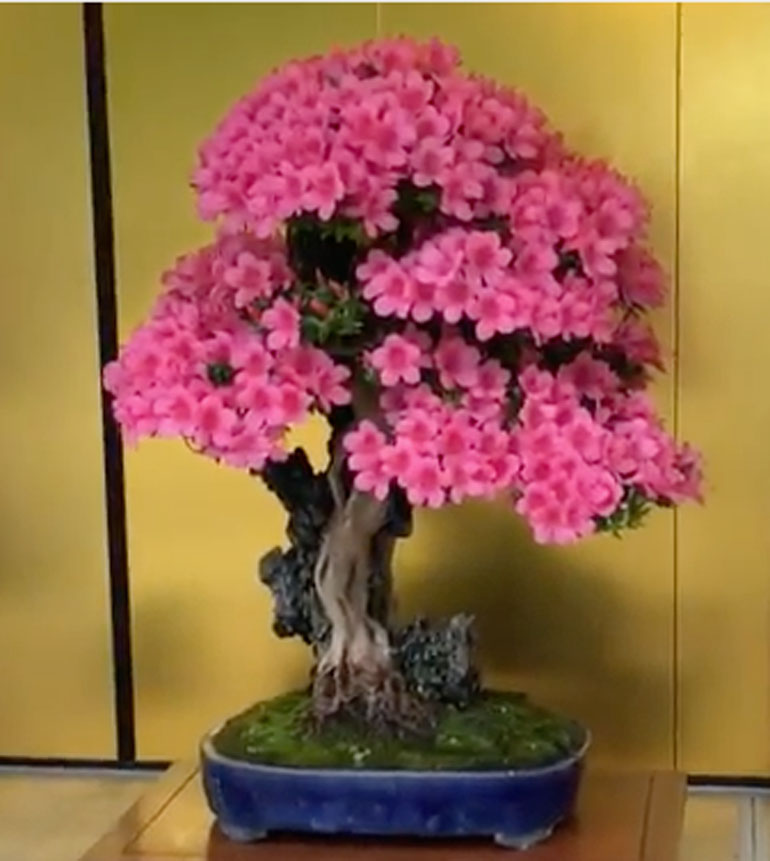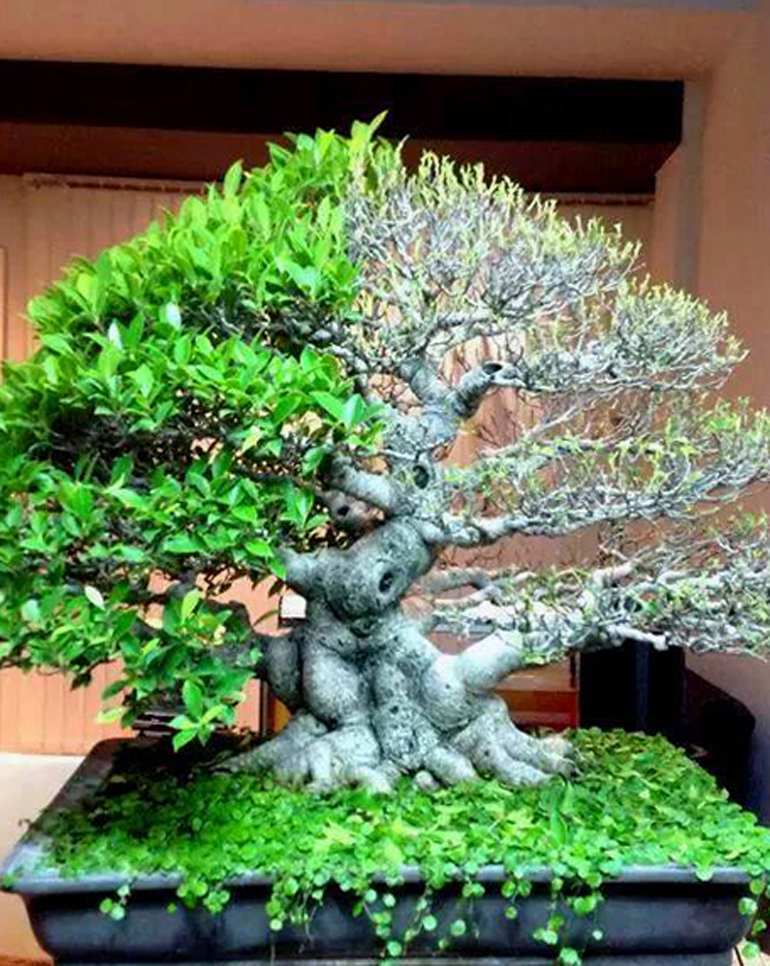
You don't often see half defoliated trees. You also don't often see photos of bonsai with both side chopped off, but there was too much noise in the background so this is my solution (you can see the uncropped version here).
The tree is a Ficus and the photo is originally from Eduardo Mourão Guedes's post at Indonesian Bonsai Society. I couldn't find a live link there but I did find one here.
If you live in the tropics you can defoliate a tree like the one above any time of year. However, if you want to defoliate a Ficus or other tropical bonsai here in the north country, you need to wait until it’s pretty warm (let’s say until night temps are over 50F, 10C). If you defoliate too soon, cold nights could hamper recovery. Conversely you don’t want to wait too long into the summer as you want full recovery before nights starting getting cold.
You have a little more latitude with temperate zone trees, like maples for instance. You can stretch the defoliating season a bit, but otherwise the same rule applies (not too early and not too late).
If you live where the growing season is quite long, you might even be able to defoliate more than once in one season, but not everyone recommends this and if you do, it is essential to start with a very healthy tree (this applies to any defoliation).
Much of the information in this post was written today (6/7/2016). The rest, as well as the images, are borrowed from a number of Bark posts on defoliation.
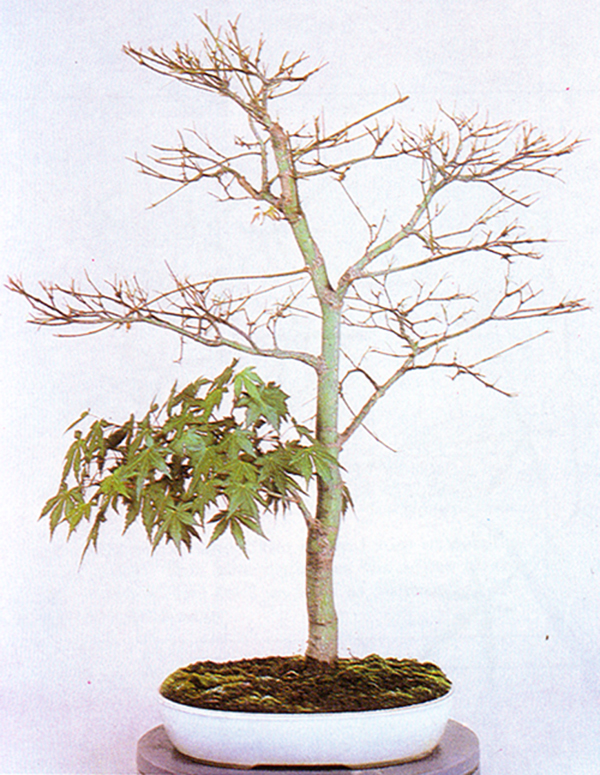 This Japanese maple has been partially defoliated. The first branch is too small relative to the rest of the tree, so the purpose of the defoliation is to speed up the development of the first branch while slowing down the development of the rest of the tree. This works because energy flow decreases in areas that have been defoliated. Conversely, because the energy from the roots has to go somewhere, energy flow increases where leaves are left on. The photos in this post are from Bonsai Today issue 103. The article that the photos are taken from is by Hiroshi Takeyama.
This Japanese maple has been partially defoliated. The first branch is too small relative to the rest of the tree, so the purpose of the defoliation is to speed up the development of the first branch while slowing down the development of the rest of the tree. This works because energy flow decreases in areas that have been defoliated. Conversely, because the energy from the roots has to go somewhere, energy flow increases where leaves are left on. The photos in this post are from Bonsai Today issue 103. The article that the photos are taken from is by Hiroshi Takeyama.
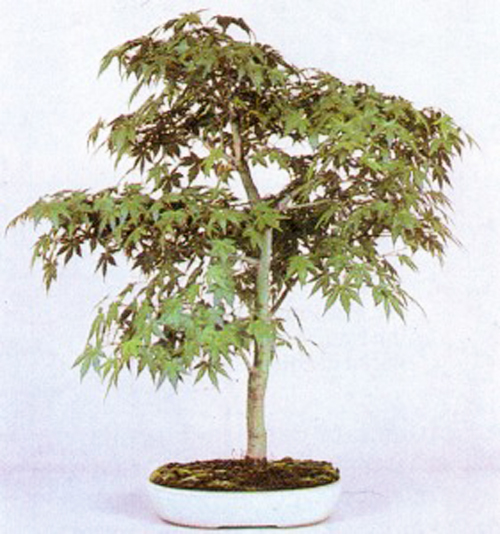 Before defoliation. Too much energy is flowing to the upper reaches of the tree. Without redirecting this energy, the top will continue to strengthen, while the lower branch remains relatively weak. This occurs because most trees, including maples, are apically dominant (most of the energy flows up towards the tree's apex). Because of this disproportionate energy flow, it would be impossible to style most bonsai without some sort of energy balancing.
Before defoliation. Too much energy is flowing to the upper reaches of the tree. Without redirecting this energy, the top will continue to strengthen, while the lower branch remains relatively weak. This occurs because most trees, including maples, are apically dominant (most of the energy flows up towards the tree's apex). Because of this disproportionate energy flow, it would be impossible to style most bonsai without some sort of energy balancing.
Defoliation defined. Defoliation is simply cutting off foliage (leaves). Though the word defoliation is used outside of bonsai to describe conditions caused by chemicals or disease, it is distinctive to bonsai as a styling technique.
Styling. For styling purposes, defoliation is commonly used for three purposes: reducing leaf size, increasing fine branching (ramification) and redirecting energy.
Health. Defoliation can also be used to remove diseased or insect infested leaves. Or leaves that have been damaged by sun, wind or other factors.
Wiring and pruning. It’s not unusual to remove some leaves when you wire just to get them out of the way. Sometimes it also helps to remove some leaves on a branch before pruning so you can better see exactly where to cut.
Timing. If you plan on doing extensive defoliation, be sure to give the tree plenty of time to recover and develop strong new leaves before cold weather starts to set in. Here in Vermont this means we need to defoliate in the early summer. In warmer climes you can defoliate well into mid-summer.
How to defoliate. For more information before you start defoliating, we have posted a series of articles on defoliation. Meanwhile, if you insist on going ahead, by sure to use sharp shears and to cut the petioles (leaf stems) at the half way point. Here’s a good illustration by Kyosuke Gun that originally appeared in Bonsai Today issue 3.
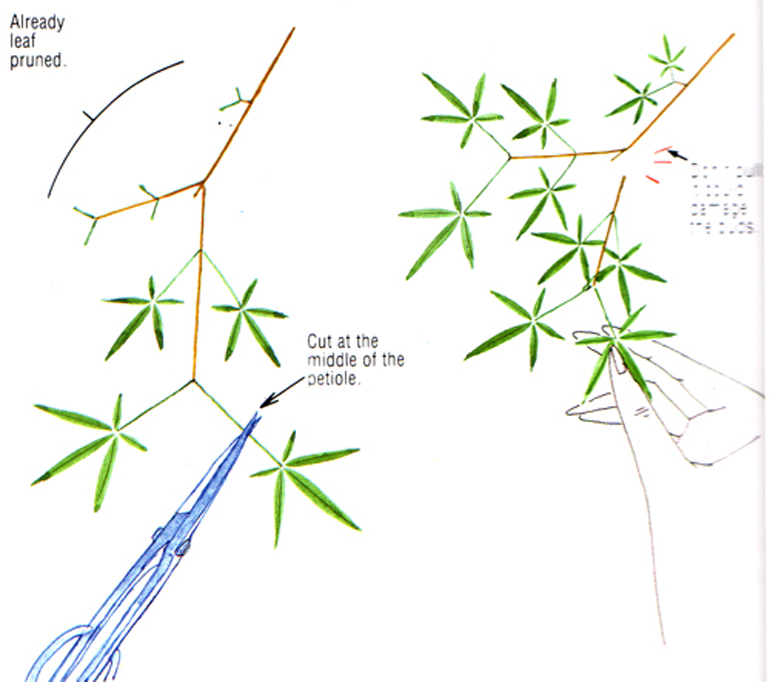
Sharp shears are essential. We recommend any number of brands, but if you are interested in saving some money, our Roshi Tools are currently 25% off (see below).
 Only the apex has been defoliated on this maple. Because maples and most trees are apically dominant, it is sometimes necessary to redirect energy downward. You could accomplish this by simply pruning off the top of the tree, but in this case, the artist wants to keep the top as it is (at least for now) while encouraging growth in the rest of the tree.
Only the apex has been defoliated on this maple. Because maples and most trees are apically dominant, it is sometimes necessary to redirect energy downward. You could accomplish this by simply pruning off the top of the tree, but in this case, the artist wants to keep the top as it is (at least for now) while encouraging growth in the rest of the tree.
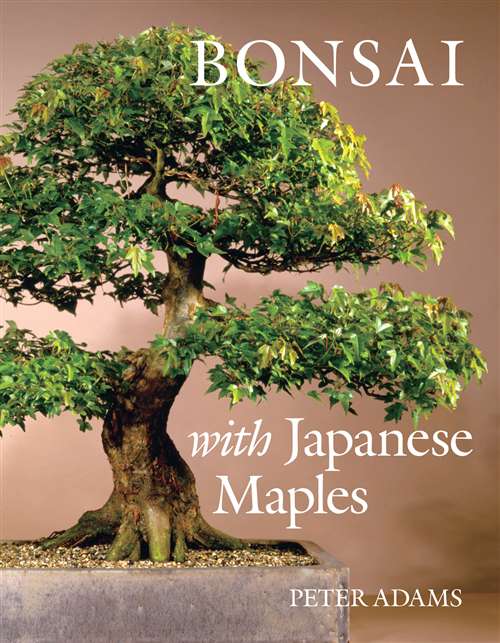
Bonsai with Japanese Maples
Japanese and Trident maple bonsai are prime candidates for defoliation,
as are many other deciduous trees.
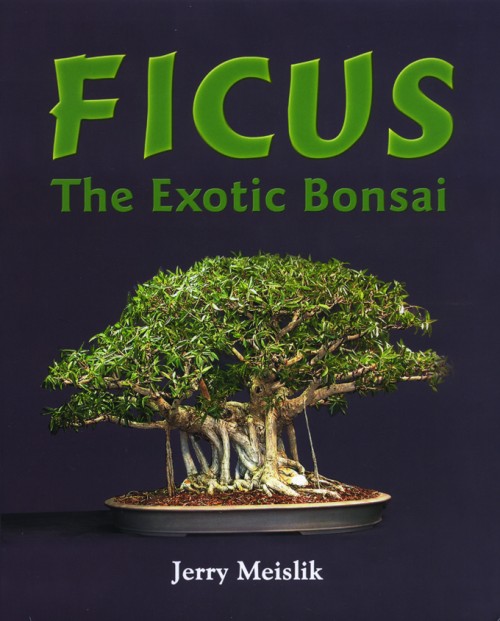 Ficus the Exotic Bonsai
Ficus the Exotic Bonsai
Ficus and some other tropical bonsai are also excellent defoliation candidates. Though we grow Ficus indoors in the winter here in the north, it’s important to get them outside as soon as temps allow so they can strengthen up before you defoliate (tropicals left indoors all winter are seldom at full strength unless you have greenhouse like conditions). I usually get mine out in late May (keeping my eye out for a late frost) and wait until there ample robust new growth and other signs of full recovery (late June or early July) before I defoliate (if I defoliate at all). Conversely, waiting too long to defoliate will not allow ample time for full recovery before cold nights set in, which can happen as early as late August here.
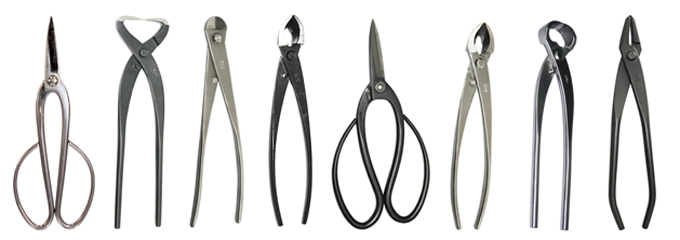
25% off Roshi Bonsai Tools
FREE Shipping for U.S. orders 49.00 or more

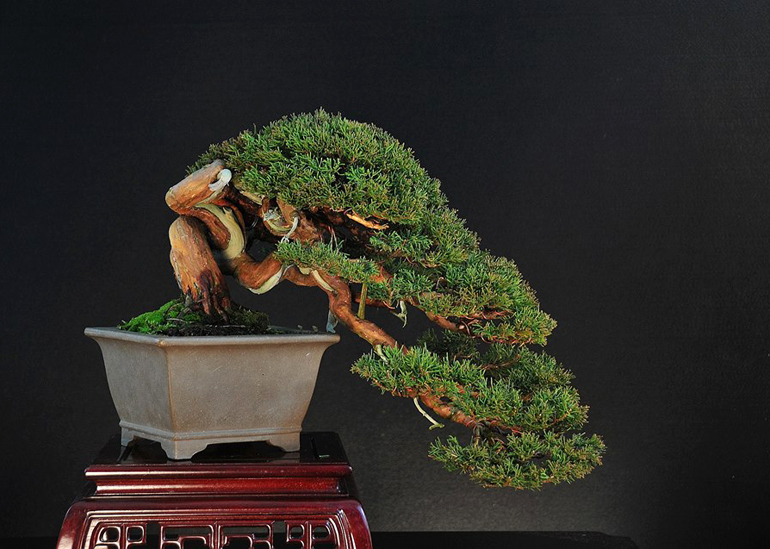
This massive Trident maple is one of approximately 200 bonsai offered at Suthin Sukosolivisit's upcoming Private Collection Sales Event.
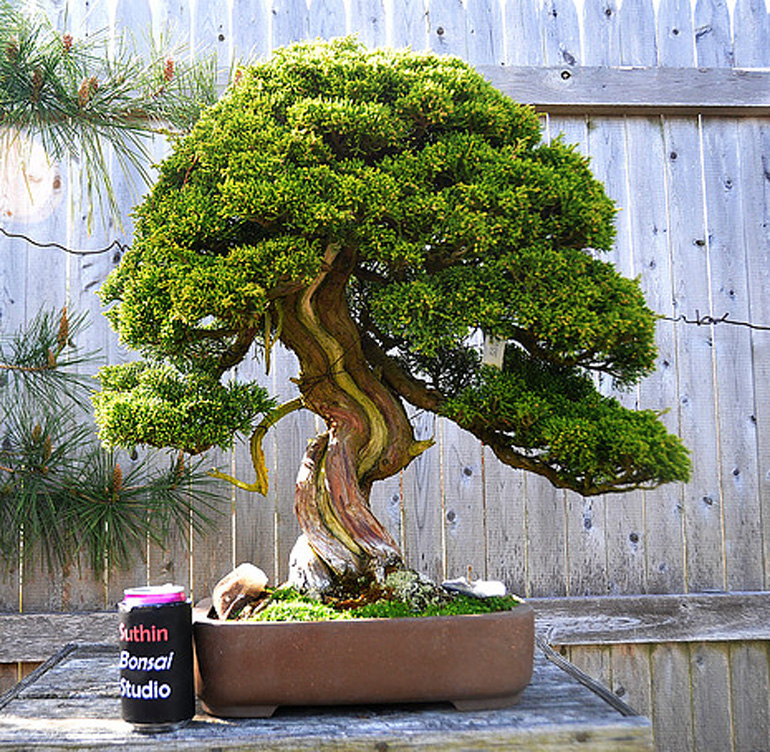
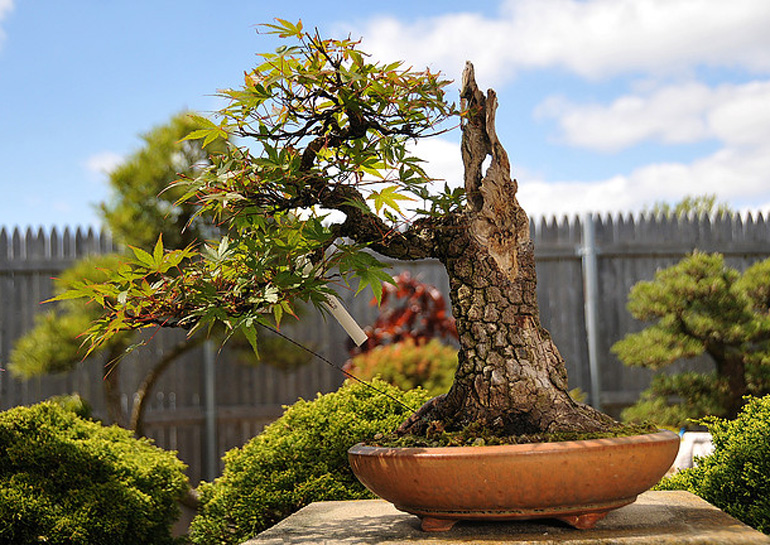
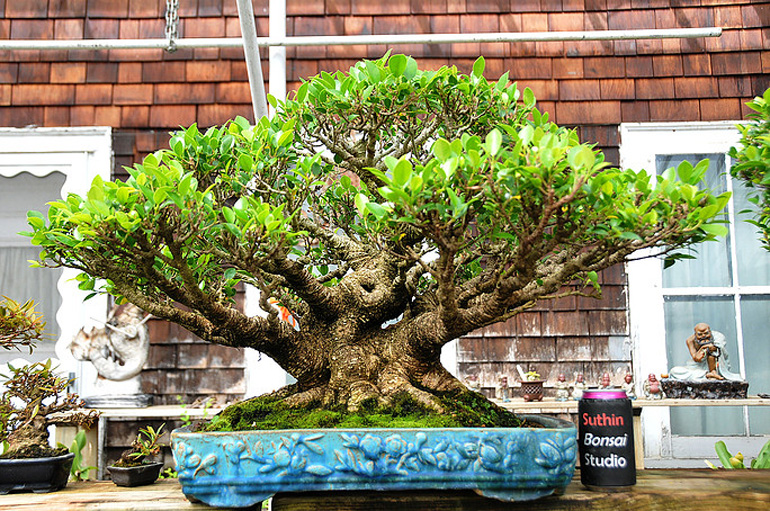
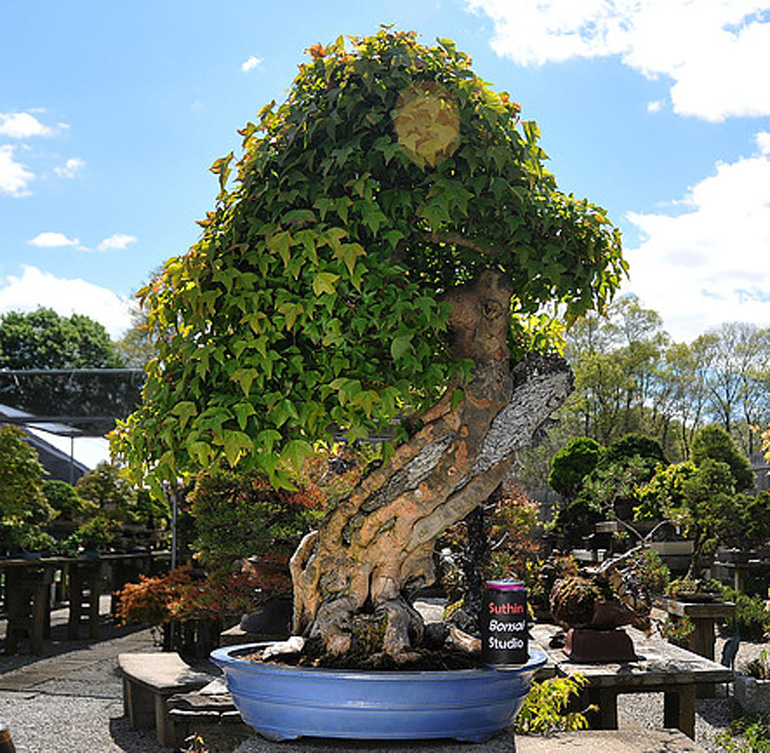
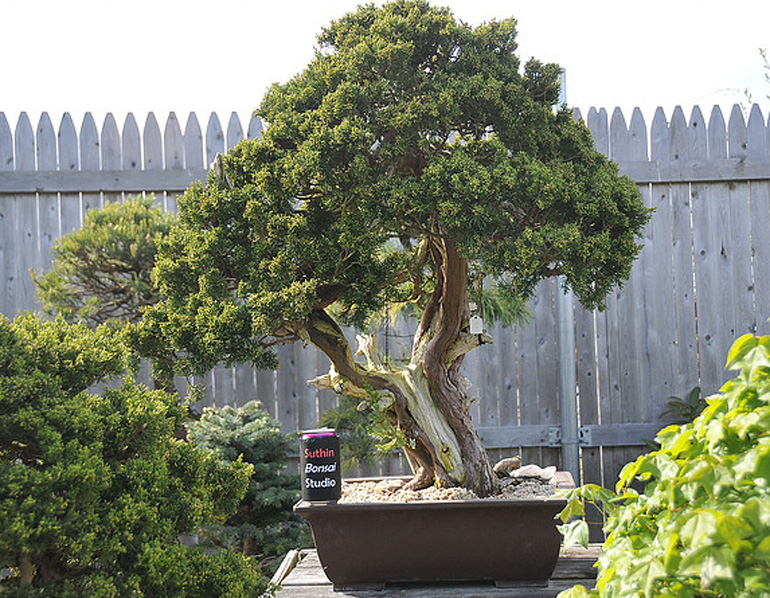
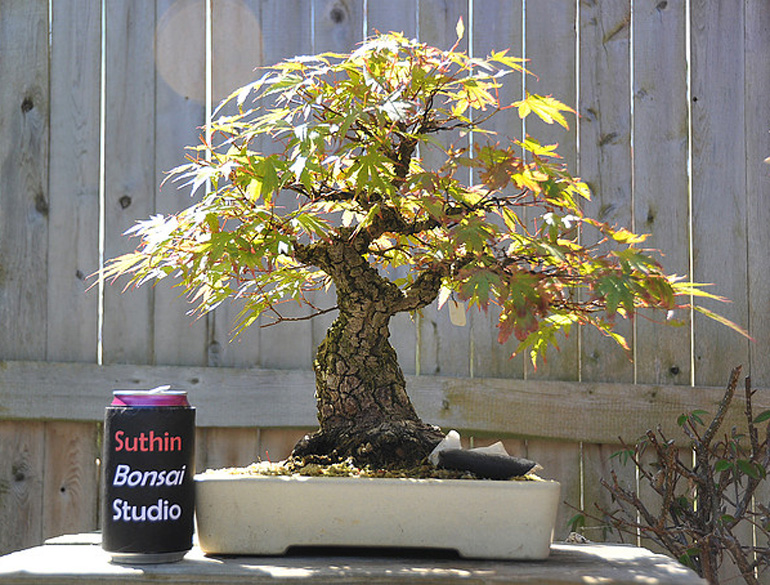
 20% off 1-5 rolls of Kilo Bonsai Wire (15.60 each)
20% off 1-5 rolls of Kilo Bonsai Wire (15.60 each) 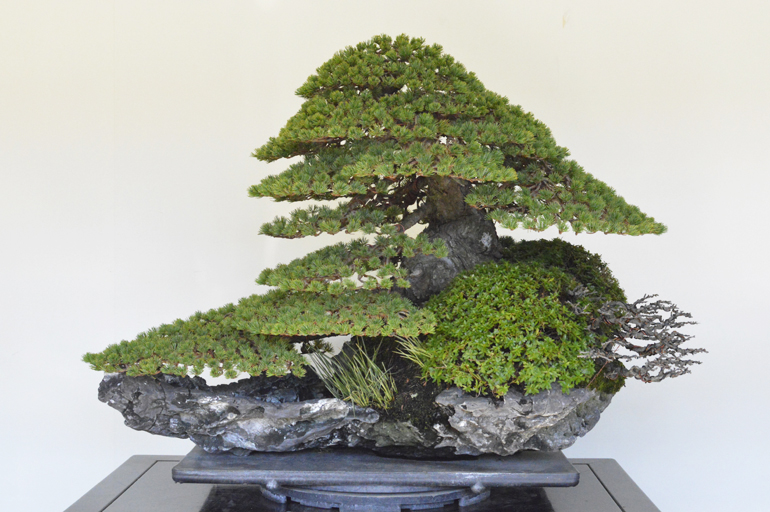
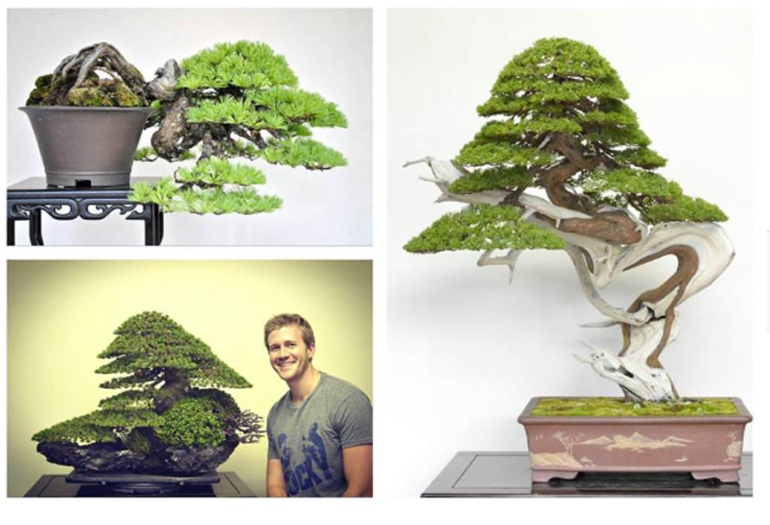
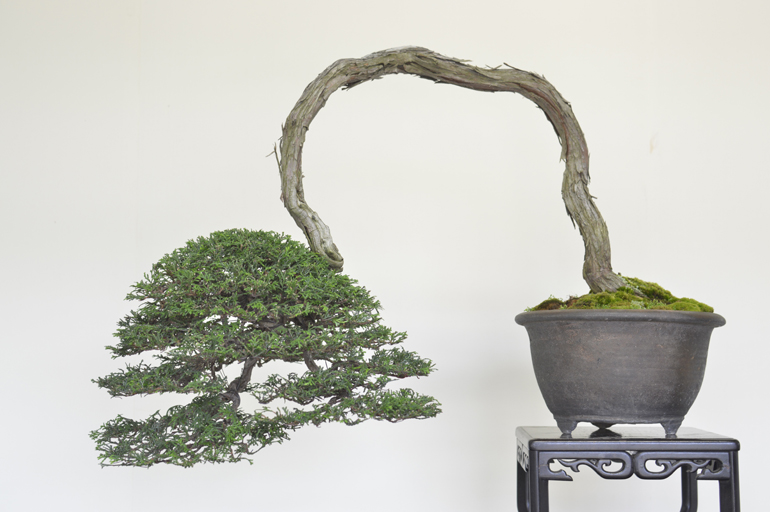
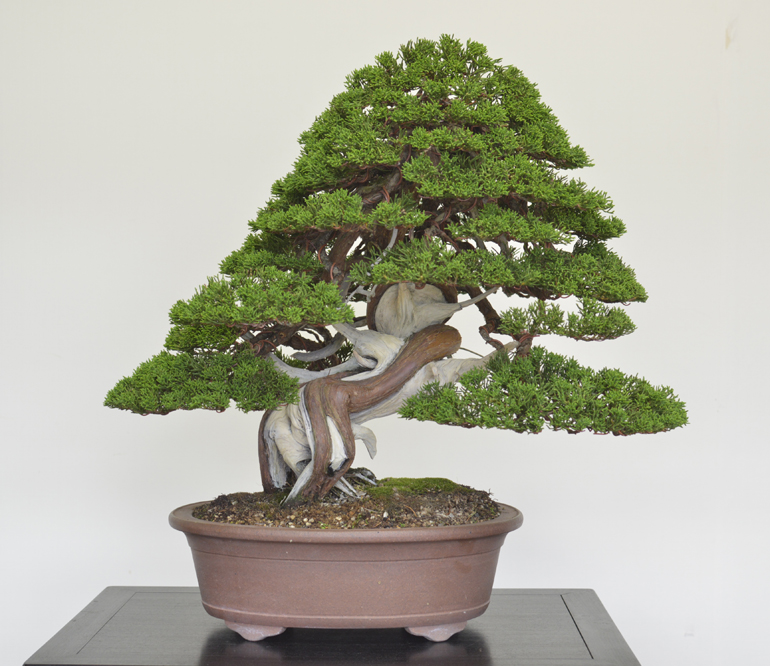
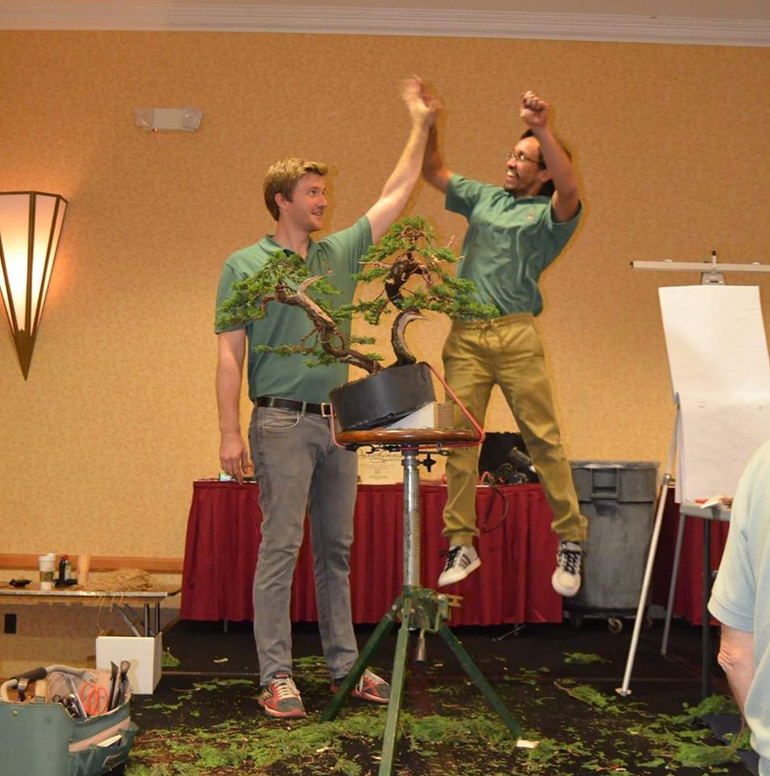
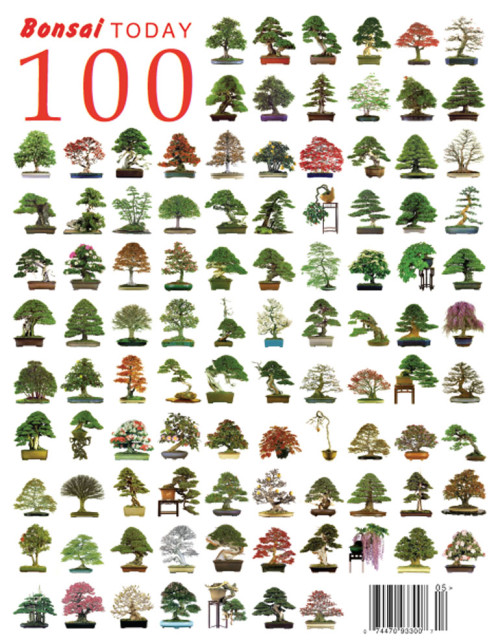
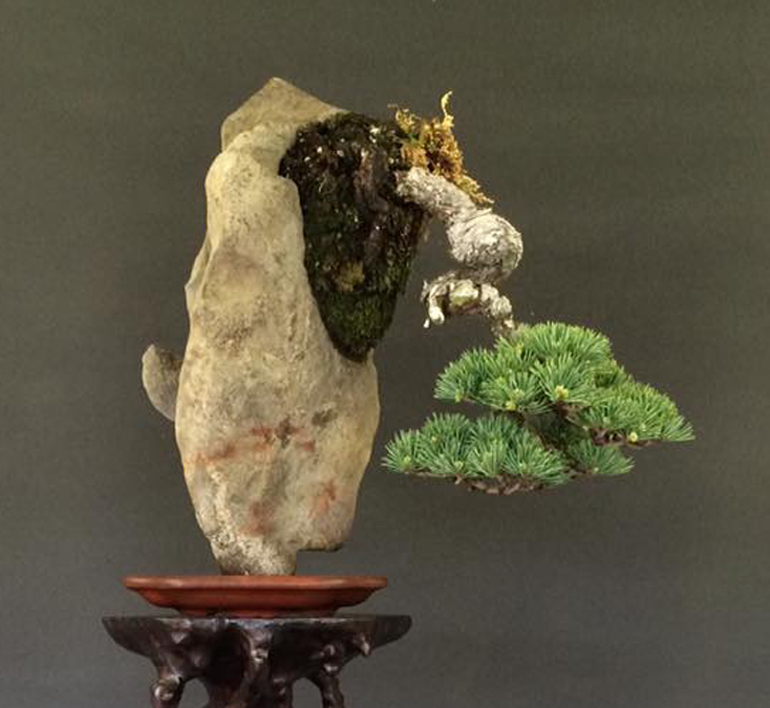
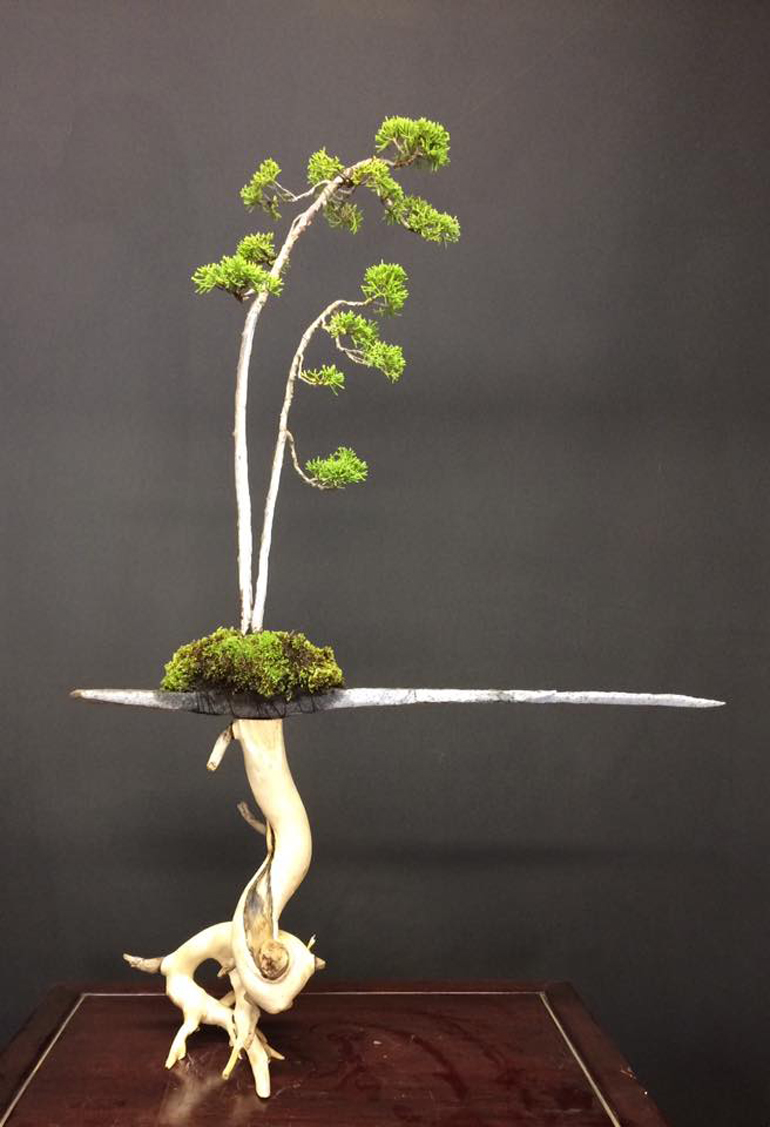 The art of Bonsai! Here's Juan's translated caption for this elegant construction: "Can you tell me your thoughts about this Bonsai (?) we put together one of these days. Oyakata said it best: the most important thing is to enjoy!"
The art of Bonsai! Here's Juan's translated caption for this elegant construction: "Can you tell me your thoughts about this Bonsai (?) we put together one of these days. Oyakata said it best: the most important thing is to enjoy!"



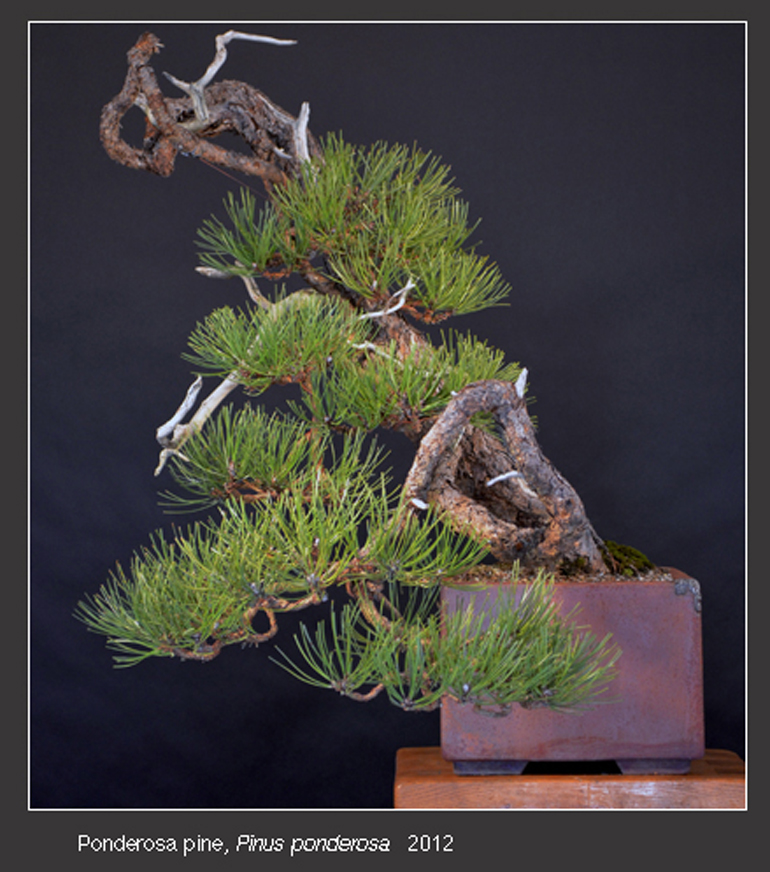
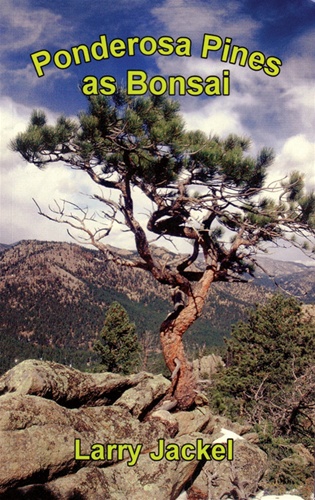 list price 22.95
list price 22.95

 This Japanese maple has been partially defoliated. The first branch is too small relative to the rest of the tree, so the purpose of the defoliation is to speed up the development of the first branch while slowing down the development of the rest of the tree. This works because energy flow decreases in areas that have been defoliated. Conversely, because the energy from the roots has to go somewhere, energy flow increases where leaves are left on. The photos in this post are from
This Japanese maple has been partially defoliated. The first branch is too small relative to the rest of the tree, so the purpose of the defoliation is to speed up the development of the first branch while slowing down the development of the rest of the tree. This works because energy flow decreases in areas that have been defoliated. Conversely, because the energy from the roots has to go somewhere, energy flow increases where leaves are left on. The photos in this post are from  Before defoliation. Too much energy is flowing to the upper reaches of the tree. Without redirecting this energy, the top will continue to strengthen, while the lower branch remains relatively weak. This occurs because most trees, including maples, are apically dominant (most of the energy flows up towards the tree's apex). Because of this disproportionate energy flow, it would be impossible to style most bonsai without some sort of energy balancing.
Before defoliation. Too much energy is flowing to the upper reaches of the tree. Without redirecting this energy, the top will continue to strengthen, while the lower branch remains relatively weak. This occurs because most trees, including maples, are apically dominant (most of the energy flows up towards the tree's apex). Because of this disproportionate energy flow, it would be impossible to style most bonsai without some sort of energy balancing.
 Only the apex has been defoliated on this maple. Because maples and most trees are apically dominant, it is sometimes necessary to redirect energy downward. You could accomplish this by simply pruning off the top of the tree, but in this case, the artist wants to keep the top as it is (at least for now) while encouraging growth in the rest of the tree.
Only the apex has been defoliated on this maple. Because maples and most trees are apically dominant, it is sometimes necessary to redirect energy downward. You could accomplish this by simply pruning off the top of the tree, but in this case, the artist wants to keep the top as it is (at least for now) while encouraging growth in the rest of the tree.


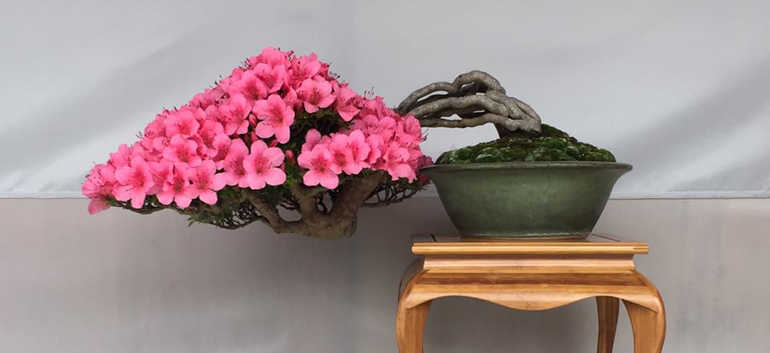
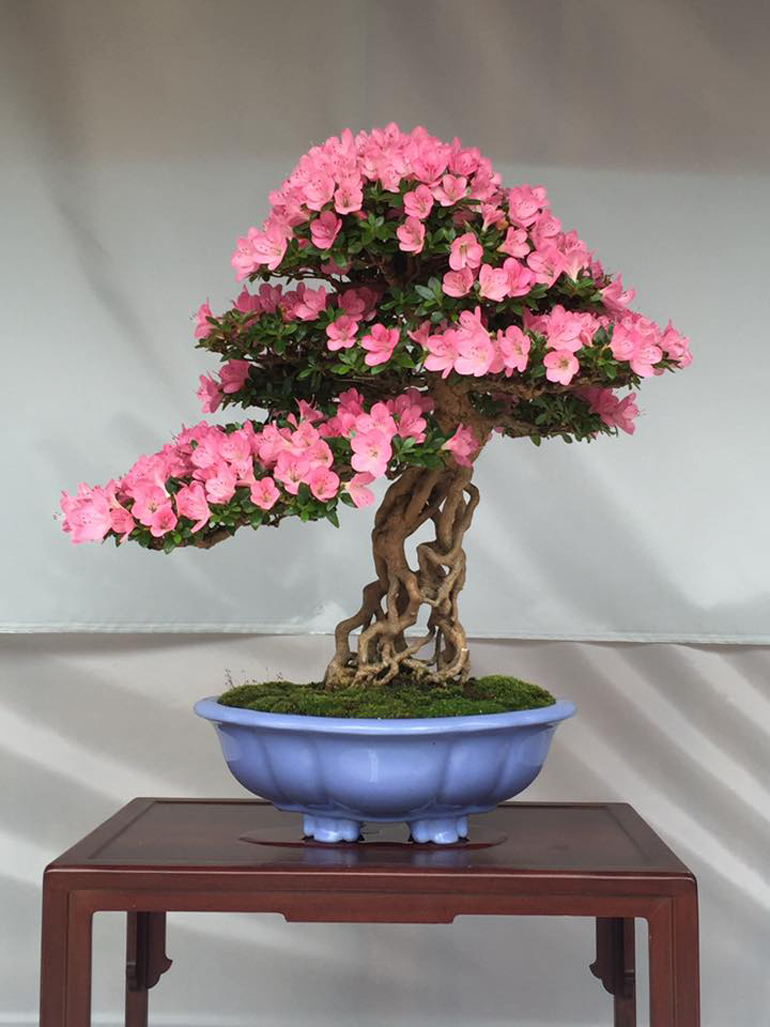
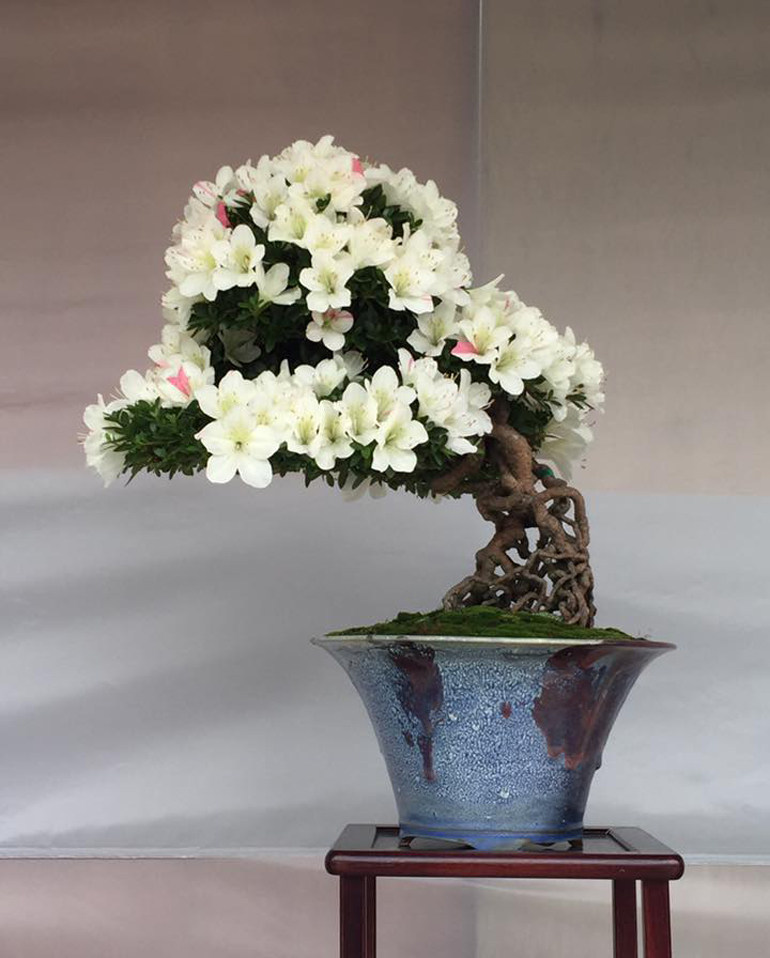



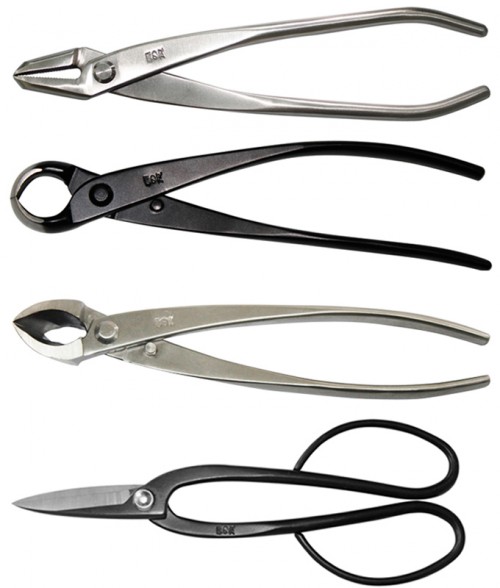


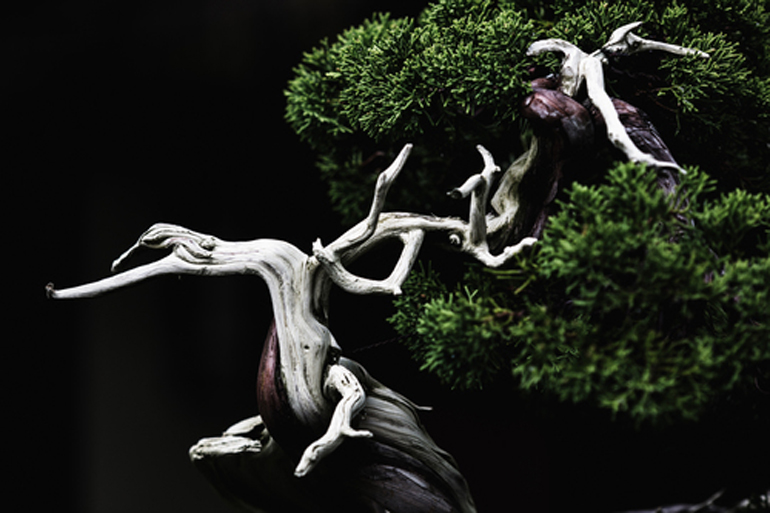
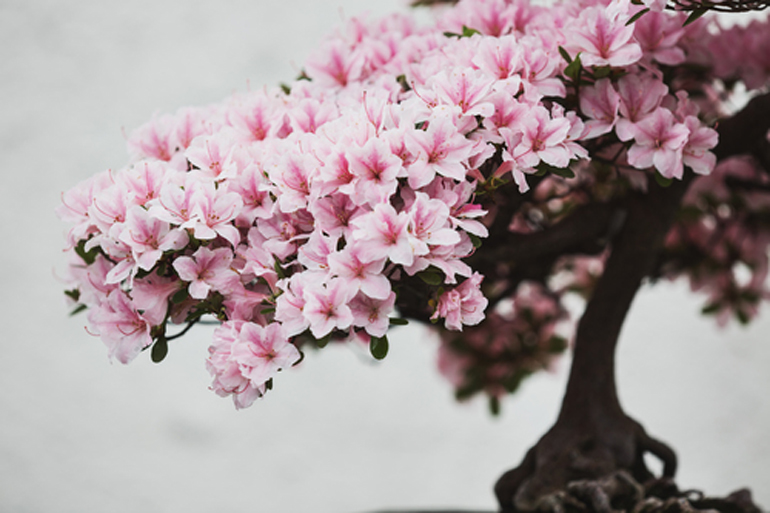
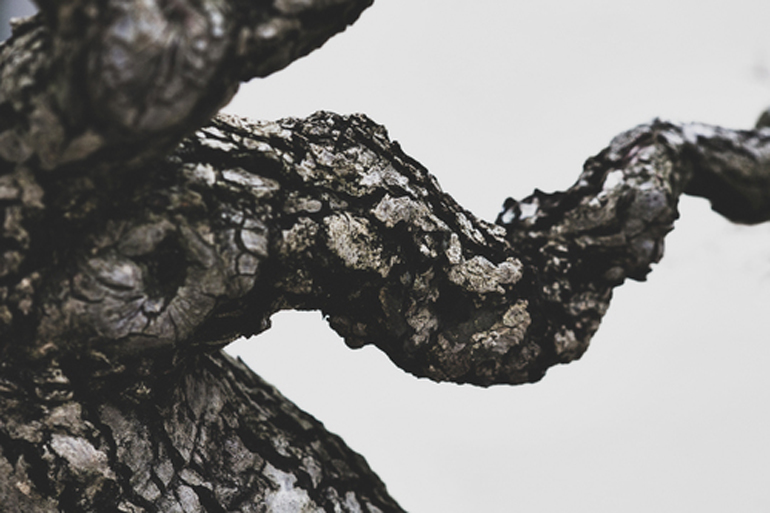





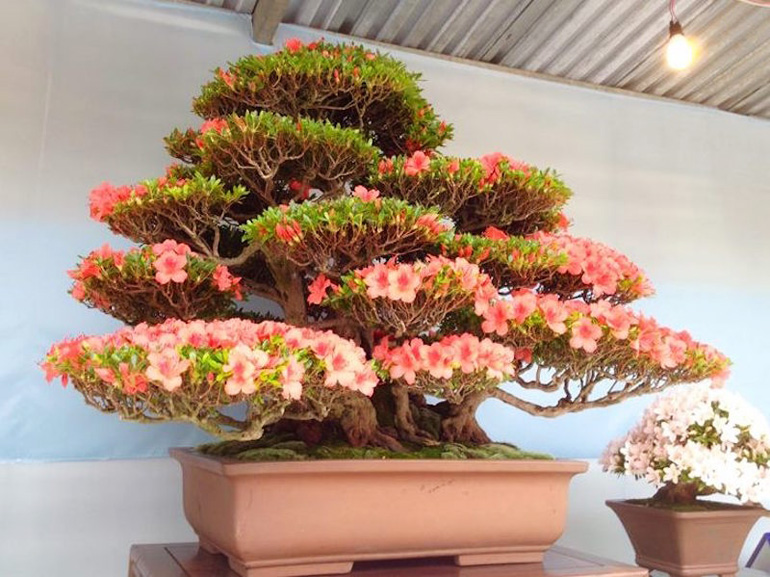
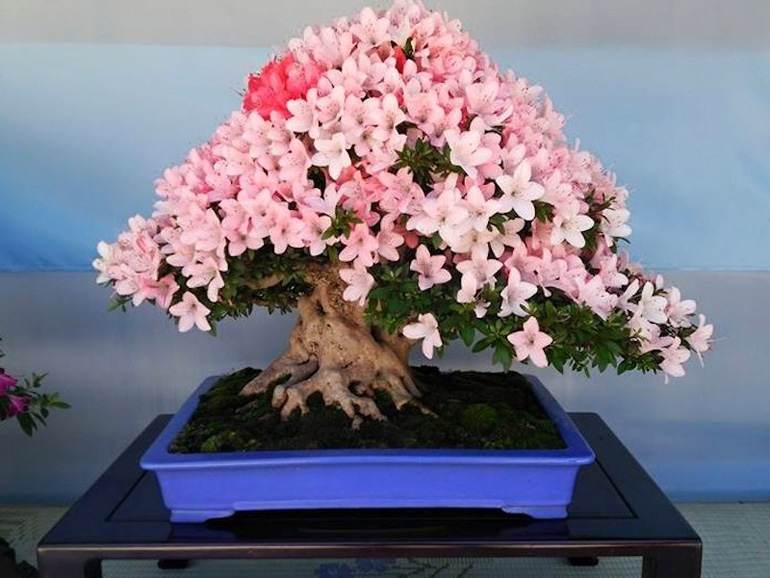

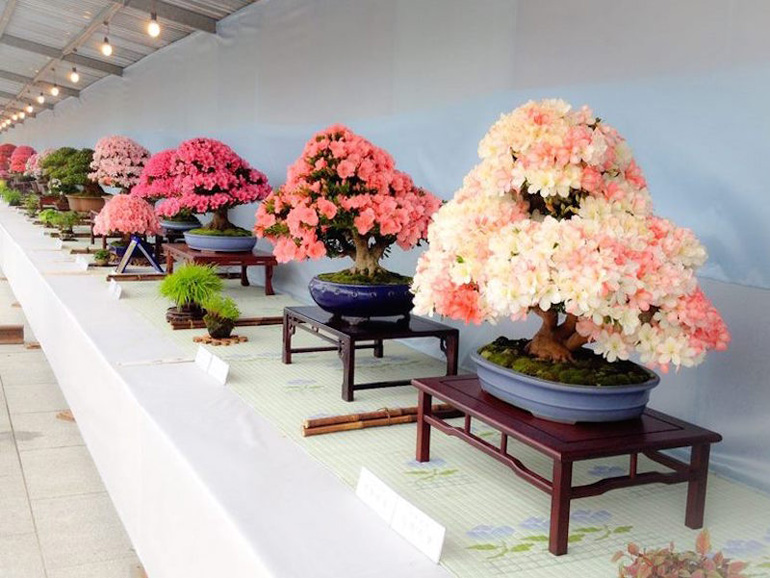
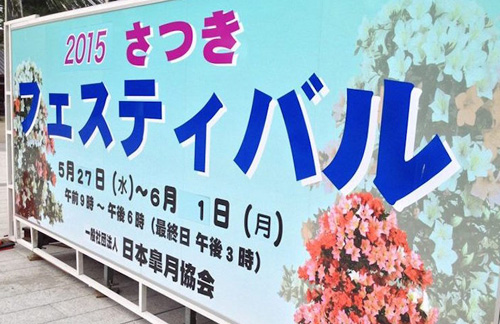
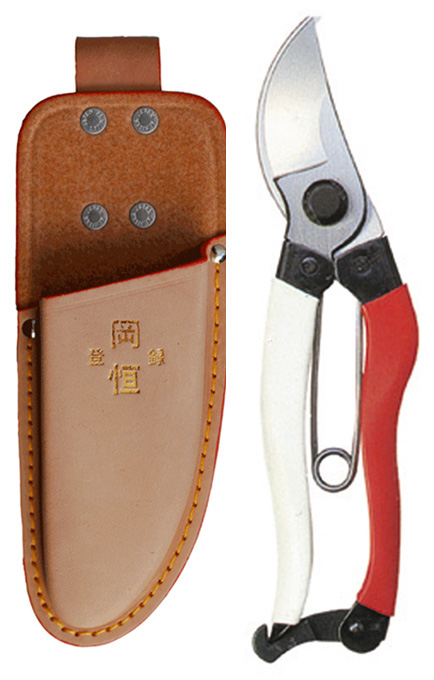


 Here's a before and after of a beautiful Bunjin Japanese red pine by Marco Invernizzi. From
Here's a before and after of a beautiful Bunjin Japanese red pine by Marco Invernizzi. From 
